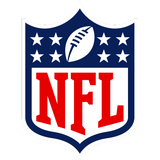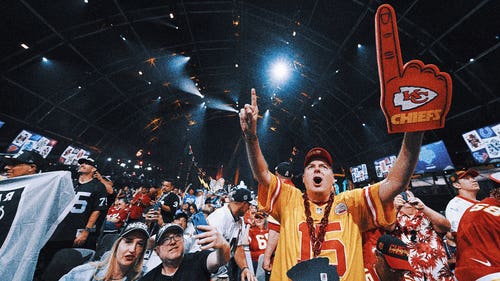
NFL needs to protect its players
What do San Diego Chargers running back Mike Tolbert and an 18-game NFL schedule have in common?
More player safety rules for the 2011 season.
For next year, NFL commissioner Roger Goodell wants an 18-game regular season and a safer game.
Last time I looked, this commissioner gets what he wants. There is no reason to think that will change.
It is time to take a peek ahead and see what might be coming.
In Sunday's game against the Bengals, Tolbert, a 5-foot-9, 243-pound running back, broke to the outside, and when he turned the corner, he was injured when he lowered his head into Cincinnati defender Reggie Nelson. Tolbert's injury occurred with six minutes remaining in the first quarter.
About 7 1/2 minutes later, Tolbert left the field after being strapped to a board, his season over and the Chargers' chances at overtaking the Chiefs all but done.
It was a legal hit, but I am not sure it will stay that way. The NFL spent a considerable amount of time last offseason looking at these types of hits, by and against players who are not considered defenseless. It likely will do this again this coming offseason and will make further changes. The ultimate goal is to get players to keep from leading with their helmets whether they are running with the ball, blocking or tackling.
The NFL must adjust the rules, although there is current language that could be interpreted to cover all players, defenseless or not.
Rule 8, Section 2, Article 12 states that it is unnecessary roughness if a player “uses any part of his helmet (including the top/crown and forehead/hairline parts) or facemask to butt, spear or ram an opponent violently or unnecessarily.”
The rule goes on to say: “Although such violent or unnecessary use of the helmet and facemask is impermissible against any opponent, game officials will give special attention in administering this rule to protecting those players who are in a virtually defenseless posture.”
Those players who are considered defenseless include the passer, a pass receiver, a runner whose forward progress has been stopped, the catcher of a kick and a player on the ground at the end of the play.
How do you adjust the rule to protect everybody? Just make it simple. Don't let any player lead with his helmet and make violent or unnecessary contact against any opponent.
What is violent? You know it when you see it. It is the type of collision that takes your breath away and makes you wince.
What is unnecessary? That is easier. It is contact that is avoidable. If it is unavoidable, then it is not against the rules.
The current NCAA rule states that “no player shall initiate contact and target an opponent with the crown (top) of his helmet.” That is pretty simple, even though some question the meaning of “target.”
To me, it is the same as avoidable vs. unavoidable. If you lead with your helmet, it is a foul if you have a choice not to, which it seems as if would always be the case.
The challenge will be to write the NFL rule properly. Mind you, this is the same rule book that defines tackling as “the use of hands or arms by a defensive player in his attempt to hold a runner or throw him to the ground.”
Yeah, right!
Players today are using their heads and shoulders more than they are using their hands and arms. The NFL is doing a fantastic job rewriting the book, and the league is about halfway done. When it is finished, there will be a lot more clarity, although the rules will remain complicated.
Another thing I feel will change is the equipment players will be required to wear.
I thought I was hearing things when I was told Green Bay Packers were kidding Aaron Rodgers for wearing a helmet that gave him better protection but “looked funny.”
That is insane.
The NFL is spending a ton of money researching helmets, and when it determines the one that protects its players the best, that should be the only helmet players should be allowed to wear, regardless of how it looks.
And also look for players next year to be wearing knee pads, hip pads and thigh pads — protective gear that used to be commonplace, but has been pushed aside in recent years.
So, it all comes together in my view. The commissioner gets what he wants, which includes an 18-game regular season, and he makes the game safer for those who play it. He expands the roster size. He limits offseason workouts. Playing careers begin to extend beyond the average 3 1/2 years.
Goodell is committed to this, and I know how he gets when he is committed to something. He will be criticized, but it won't bother him. I give him credit for that.
Gee, do we dare go back to the days when defenders actually tackled a runner by using their hands and arms to throw him to the ground? That's how they used to do it.
Maybe it's time to take a step forward by taking a step back.









